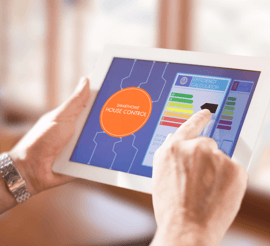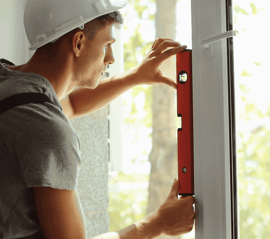 When you buy a brand new home, you're buying a structure that meets current industry code in many different ways. Building codes have improved exponentially over the last few decades to ensure the home you are buying is not only structurally sound, but energy-efficient as well.
When you buy a brand new home, you're buying a structure that meets current industry code in many different ways. Building codes have improved exponentially over the last few decades to ensure the home you are buying is not only structurally sound, but energy-efficient as well.
As an investment, buying new saves you tens of thousands, not only because you won't have to do costly repairs or renovations as in an older home, but your home's energy usage is a fraction of what it was even 15 years ago.
Just as home customization has changed from then to now, higher building standards have increased the efficiency and longevity of new homes.
 Energy-Efficient Appliances
Energy-Efficient Appliances
The functionality of your home is the most important element to day-to-day living, and as such your appliances are likely the most used portion of your home.
Gas fireplaces, refrigeration, premium kitchen appliances, laundry – the energy used to run these appliances has been atrocious in the past, but new homes maintain the lowest energy usage in history, often saving you 30% or more.
In addition, your furnace and hot water tank are on average at 90% efficiency and higher, meaning your electrical and gas bills will be a fraction of what they would be in an older home. You can even opt for a tankless water heater which heats the water as you use it rather than heating a whole tank of water ahead of time and keeping it hot before it's used.
HRV System (Heat Recovery Ventilator)
New homes are constructed with HRV systems, which circulate air from the outside with air from the inside of the home prior to its arrival at the furnace. This means the air is already pre-warmed before it reaches the furnace, and thus your furnace doesn't have to work as hard, saving energy. The function of the HRV system also controls the moisture in the air of your home, meaning your humidifier also works less to maintain the proper level of moisture in the air.
 Weather-Resistant Windows
Weather-Resistant Windows
In homes built in 1980 and prior, most windows installed were single-pane. This leads to significant energy loss and is the reason why older homes feel "drafty" in colder weather. Cold air outside affects the air temperature inside the home as there is no insulation in the glass window to keep the air temperature balanced.
New homes not only have extra panes of glass, they are triple-pane windows (in Low E or Argon-filled varieties) that insulate the air inside the home and maintain its temperature. This, in turn, also means your furnace doesn't have to work as hard to keep your home warm, or your air conditioning unit to keep it cool, reducing your overall energy costs. The design of these windows also prevents frost from building on the inside of your windows.
These windows prevent energy loss within the home, which in turn means your home is more air-tight equaling better energy efficiency.
Low-Flow Fixtures
Water usage in the home can also add to your overall energy usage. New homes are constructed with low-flow fixtures, such as toilets, faucets, and showers, controlling the amount of water brought into the home per minute. This significantly reduces water usage and the cost of your energy bill if the water is heated.
Better Insulation
If you've ever seen inside the walls of a 100-year-old home, you might be shocked to find the walls lined with old newspapers. This wasn't a mistake; in many old homes, this was the only insulation material they could find.
Of course, it couldn't have improved the warmth inside the home very well, and over the years new products have been invented and improved. In addition to regular pink bat insulation, we now have newer products such as Roxul and spray foam to assist in improving the R values in a new home.
Pink insulation is made from fibreglass, whereas Roxul is made from a combination of stone and wool, providing a more solid insulation. Plus, it's a product also used for fireproofing and soundproofing. Spray foam insulation consists of certain chemicals that react with air to form a foam product that seals, insulates, and provides a solid moisture barrier. A far cry from newspaper, isn't it?
Today's building codes ensure your new home is as energy efficient as possible, which saves you thousands of dollars in the long run. If you're debating between purchasing an older home or a new home, a new home may cost you a bit more in the beginning, but the overall energy-efficiency of a new home saves you far more than if you purchased older and needed to upgrade or renovate.
Your new home should be a place you can move into and not have to worry about major costs down the road.
 Photo credits: engineer, installing windows, smart home technology
Photo credits: engineer, installing windows, smart home technology



